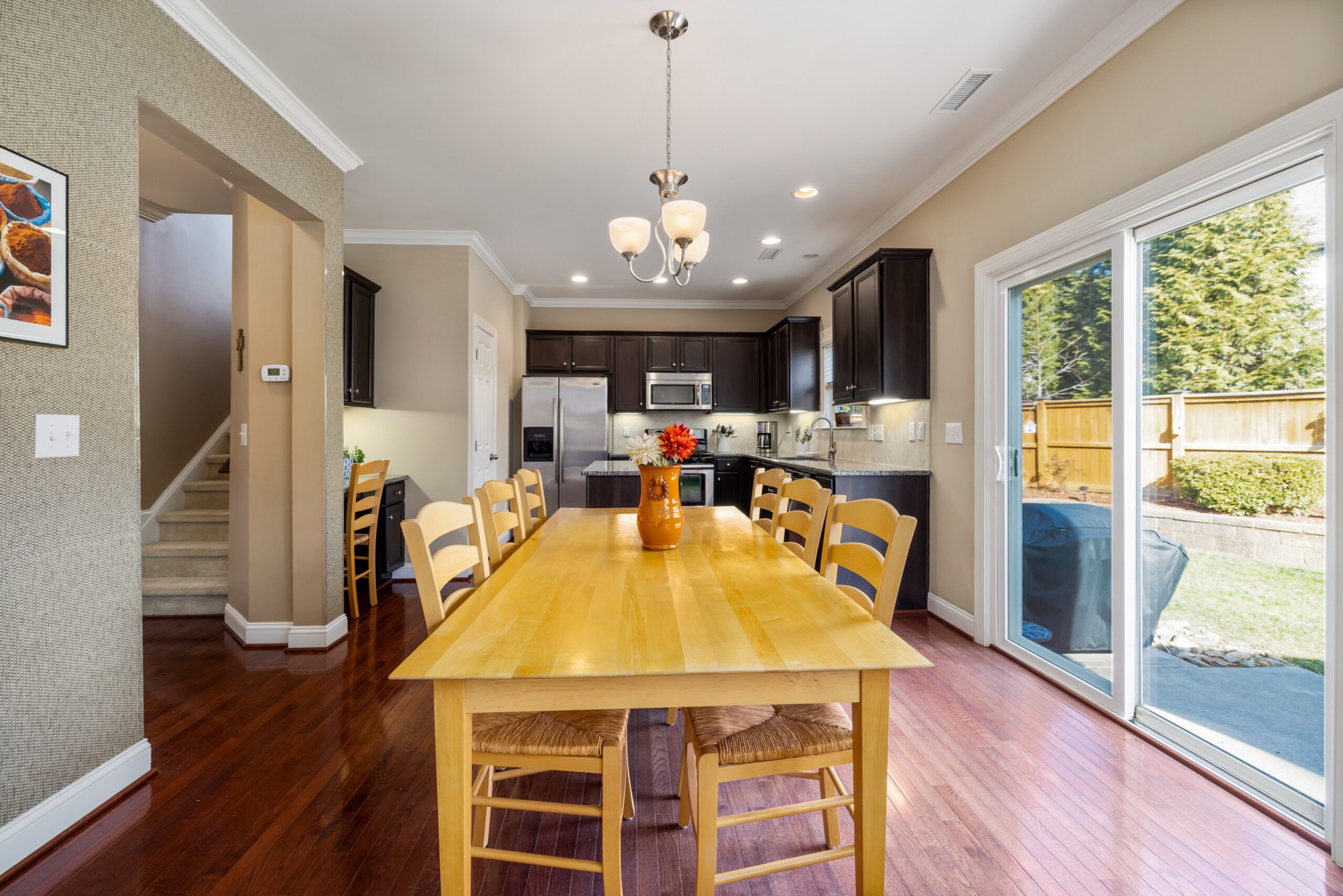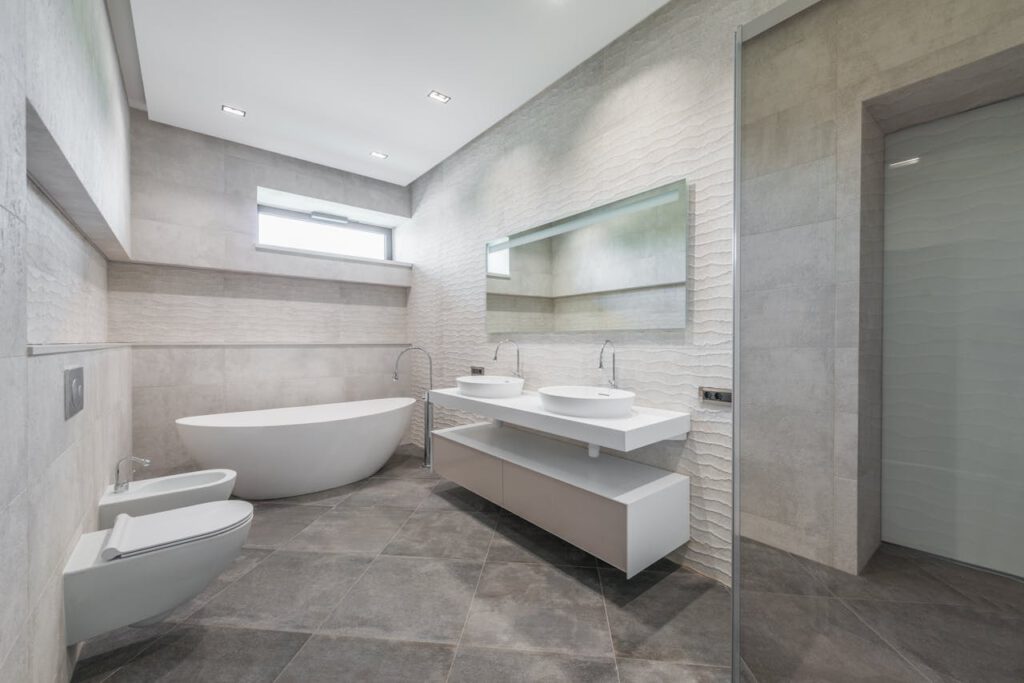Think about your dream kitchen. Does it have a La Cornue stove, a Sub-Zero refrigerator, and custom cabinetry? Granite countertops or statement backsplash? Maybe even a spigot above the stove?
That sounds amazing, but can these accessories help you and your family live healthy lives? Can they keep your vegetables fresh for a week or help you take some work out of healthy cooking? Or better yet, help you cook healthy food without having to jump through hoops?
As much as we love stunning showpiece kitchens with all the accessories we could imagine, there is something to be said about kitchen appliances and accessories that actually help us live healthier lives.
Wondering how to make a healthy kitchen in your home? Let’s get into it. But before we do that, let’s talk about things you should know before breaking down your current kitchen.
4 Things to Know Before Starting a Kitchen Remodel
Before you begin knocking out cabinets and lugging out appliances, ask yourself what you want. Why are you remodeling your cooking space? Are you updating worn-out finishes, materials, and fixtures? Or breaking the whole kitchen?
Once you’ve decided what you want, hammer out the following elements:
Budget
You’re probably going, “duh!” But we had to say it. Your budget determines what you can and cannot get. Plus, it ensures you don’t overspend on expensive big-ticket items or bankrupt yourself before even half your kitchen is done.
But what if you need more money than you set aside? You can stretch your budget. Just make sure you’re stretching it for reasonable expenses instead of avoidable costs.
Timeframe
If you have two kids and a 9 to 5, you can’t go too long without having access to your kitchen. Plus, the constant banging and stomping will get on your nerves if it goes on too long, especially when juggling high-priority work.
So, once you decide on your budget, think about how long you can reasonably let the remodel linger on. If four weeks are no problem, settle on that. But keep a week or so of contingency time because you never know when something could go sideways.
Appliances
Once you’ve decided on your budget, the first things to get are appliances because an overlooked appliance can throw a wrench into your plans. For example, if your fridge is 36 inches wide, and you only left 30 inches of space for it, you’re done.
So, always check out the dimensions of your appliances before you begin remodeling your kitchen. And by dimensions, we mean width, length, and depth. Plus, leave enough room for ventilation behind, beneath, and above your appliances, and don’t forget about the doors!
Big-ticket Items
Appliances aren’t the only big-ticket items you have to consider in your remodeling plans. Think about floors, cabinets, and countertops when making your remodeling plan. None of these are cheap.
7 Elements of Healthy Kitchen Design
Now that you know what to hammer out before remodeling your kitchen, let’s look at ways to make it into a reality:
1. Kitchen Island
Your kitchen is a workspace, no matter how pretty it looks, and part of healthy kitchen design is creating a working space that is easy and enjoyable to work in.
Remember: your kitchen is where you prepare food, gather together, eat, and engage with each other. So, it should bring your family together instead of separating it. And the best way to do that is by installing a kitchen island.
Kitchen islands create a lot of flexibility for cooking and seating. Plus, they look extremely spacious and make assembly and formal dining easier.
2. Storage
You can never have enough storage in your kitchen. Literally. And if you’ve been short on storage in the past, a remodel is the perfect time to upgrade it! Plus, you can try storage options you’ve never tried before.
For instance, if you’re looking for more functional storage, go for drawers instead of shelves. Not only are drawers easier to handle, but you can also find everything you put into them in a jiffy. You can’t do that with shelves, especially if they’re built up high.
3. Lighting
A bright, open kitchen is a must for every house. It should be well-lit and have as much natural light as possible, even if it’s through a window that never gets direct sunlight.
The best way to let natural light into your kitchen is through windows. And if you’re remodeling your kitchen, make a place for as many windows as you can. But if that’s not an option, highlight everything with task, overhead, and accent lighting.
It’s never too bad to actually see what you’re cooking. Plus, accent lighting above the breakfast nook will help your family see your efforts at creation!
4. Fixtures
You may not think fixtures are essential to a healthy kitchen, but you’d be wrong. Kitchen fixtures determine the efficiency of your kitchen. For instance, no-touch faucets can help you wash your dirty hands without touching them.
When somebody forgets to turn the faucet back to cold, anti-scald protection can stop boiling water from splashing onto your hands.
5. Ventilation
Kitchens are flush with moisture, cooking smells, and various other odors. Plus, when you’re cooking, tiny oil and steam particles fly into the air and create a layer of waxy material on nearby appliances, which can be challenging to remove.
The best way to deal with humidity and odors in the kitchen is through ventilation. With poor ventilation, your kitchen will become a cesspit for bacterial growth, which can lead to mold and mildew. However, the right ventilation can make a huge difference.
Just install a range hood above your stove to dissipate scents and remove cooking residue before it has a chance to settle on appliances.
6. Sink
Your sink is the workhorse of your kitchen. But if it’s too small, it’ll stop you from efficiently performing all your assembly and cooking processes in one go. You’ll probably have to pile up pans and pots to wash later, which isn’t great when you’ve cooked for 12 people.
So, get a sink that’s large enough to fit your biggest pans and pots. Not only will it help you to do your chores efficiently, but it’ll also contain everything you get dirty. Plus, a big sink is a handy place for washing lots of fruit or vegetables.
7. Floors, Cabinets, and Countertops
You should start by thinking about flooring options before you decide on countertop materials. These could include hardwood, natural stone slabs or tiles, wood-like vinyl, and high-end ceramic or porcelain tiles.
Once you’re done with the flooring, move on to the cabinets. If you’re only doing a minor remodel or are happy with your current cabinets, giving your old cabinets a fresh coat of paint or polish is going to be enough.
But if you’re overhauling your kitchen, you can get fully custom, semi-custom, pre-assembled stock, or even ready-to-assemble cabinets. Just make sure they don’t clash with your flooring.
Now that you’re done with your cabinets, it’s time to think about your showpiece: the countertops. You could choose quartzite, granite, or marble if you want natural stone in your kitchen. These options are high-quality and timeless but can cost an arm and leg.
If that’s not your jam, you can go for laminates, which are less durable but less expensive, or even ceramic tile or concrete. Just make sure they work with your design and don’t limit your resale options.
3 Tips for Surviving Without a Kitchen During Your Remodel
So you’ve hammered out all the details and determined what type of kitchen you want. Now it’s time to think about how you’re going to survive the next few weeks without access to your KitchenAid stand mixer and waffle maker.
If you’re struggling with that, these tips can help:
1. Put up a Temporary Kitchen
If you’re staying at home during your kitchen remodel, you won’t have access to your stove, fridge, oven, and other items. So, putting up a temporary kitchen is crucial.
You can do it by taking over your laundry room with kitchen tools and appliances or setting up a makeshift kitchen on your patio. If that sounds terrible, you could quit and order takeout.
2. Put Aside Essential Tools and Appliances
You’re going to need tools and appliances to cook in your makeshift kitchen. Some of these include:
- Portable mini-stove.
- Spoons, forks, knives, and other cooking utensils
- Essential pots and pans.
- Food storage items.
- Mini refrigerator, oven, and microwave
3. Use Easy-cook Appliances
Slow cookers, hot plates, instant pots, electric griddles, and microwaves are your friends when your kitchen is hijacked by a construction crew. Not only are they easy to use, but you can also make complex meals using them.
Here’s what you can use each easy-cook appliance for:
Microwave: Warming up frozen meals, steaming potatoes, making instant rice, heating soup, etc.
Slow Cooker: Making stew, pulled pork, soup, chili, pilaf, pot roast, etc.
Hot Plate: Eggs, bread, pasta, etc.
Electric Griddle: Pancakes, tacos, tortillas, etc.
Instant Pot: Pasta, roast meat, chicken, rice, etc.
But if working with easy-cook appliances isn’t your thing, you can grill everything you can get your hands on, from vegetables and pizzas to steaks and seafood.
The Takeaway
Your kitchen remodel will bring a truckload of choices, and by the end of it, you’ll probably have so much “option fatigue” that you won’t be able to choose where to eat lunch or dinner.
But to get the healthy kitchen of your dreams, you have to put in the work and make smart decisions, no matter how weary they make you. Remember: be deliberate with your choices to maximize your budget, timeline and get your desired outcome.

